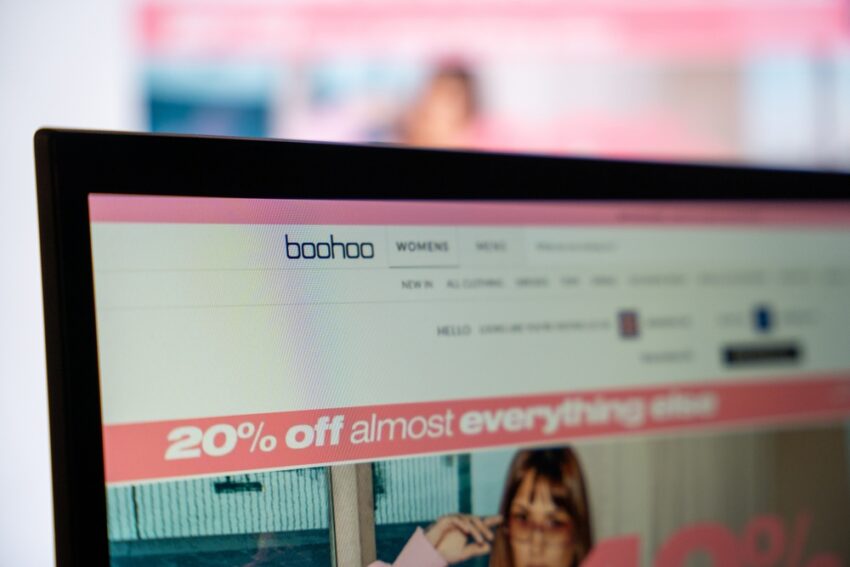2 big future-of-work trends are about to collide
If you work in tech, it’s been a weird couple of years. In the summer of 2022, the fundraising apocalypse hit startups. By late fall, the waves of layoffs in big tech began, transforming LinkedIn from a place where people extol B2B sales lessons they learned, from proposing to their girlfriends, to a support group for long-time employees who had been callously laid off. At the same time, generative AI entered the chat with the launch of ChatGPT, as analysts and CEOs alike tripped over each other to project how many people the technology would replace. If you feel like your butt is getting sore from being perched on the edge of a cliff, I don’t blame you. It seems high time for things to settle down, but conversely, I believe things are about to accelerate as two big workforce trends collide. The upside: As they do, we have the chance to rethink work for the better. The perfect storm We’re seeing two fascinating twists in the future-of-work story play out right now. The first twist is that generative AI has entered the trough of disillusionment on the Gartner Hype Cycle. It was easy to see this coming. Large companies are bad at digital transformation, and generative AI is digital transformation on hard mode: Use cases are tricky to identify; it requires shifting from a mindset of buying software to building tech; there’s no playbook; and employees that haven’t used it are actively threatened by it. Companies that have figured out strong generative AI use cases are saving hundreds of millions of dollars, but most companies’ existing teams aren’t built to make the kind of sharp turn that GenAI requires. The second is that the full-time versus freelance paradigm is shifting. In the gig economy, freelancers were cast as second-rate workers: commoditized cogs hustling for gigs because they couldn’t get full-time jobs. This characterization was always unfair. As Daniel Pink documented over 20 years ago in his best-selling book Free Agent Nation, there’s long been an elite class of coders, consultants, and creators who eschew the shackles of full-time employment for the freedom and flexibility of going on their own. Now, we’re seeing that elite class quickly grow. The pandemic was a catalyst as highly-skilled workers took an existential step back and considered how they wanted to work and what they wanted to work on. The tech layoffs were a second catalyst; our research team found that following the tech layoffs of late 2022, two-thirds of knowledge workers lost trust in full-time employment, and 74% said that the layoffs had made freelancing far more attractive. These findings sparked a new workforce trend dubbed “The Great Betrayal” as the most highly-skilled workers said they were ready to ditch full-time employment to bet on themselves, a trend you’ve likely seen in your most successful connections going “fractional” on LinkedIn. Now, companies’ GenAI struggles are colliding with the Fractional Economy to create the perfect storm for change. In survey after survey, corporate leaders identify talent and strategy as the largest gaps holding them back from adopting GenAI, and they’re turning to highly-skilled freelancers—who greatly outpace full-time employees in GenAI adoption and expertise—to get out of their innovation rut. Forty-five percent of corporate leaders say that freelance talent has doubled their organizational agility; 40% say it’s doubled their quality of work, and 39% say it’s doubled their innovation and scalability. The era of blended teams As a result, the most forward-thinking innovation leaders are adopting a new paradigm of blended teams—supercharging a smaller core team with specialized freelance talent to unlock innovation. Blended teams are different than the outsourcing of the past; most of the tasks outsourced to near-shore devs tended to be the kind of rote tasks that GenAI is—ironically—getting very good at today. Blended teams mean truly embedding freelance talent inside of your existing teams to infuse them with new skills, expertise, and ideas. In the AI age, this model has added benefits. The most common one we see at A.Team is that free agent product builders have a huge knowledge and experience advantage. AI is very new, and most full-time employees have only deployed new AI use cases and infrastructure once—most of the time, they haven’t done it at all. On the flip side, many top fractional AI architects have led deployments at a half dozen companies; they know the pitfalls that lurk around the corner. The second big benefit is that this model allows large companies that aren’t used to building products to infuse their team with the type of people who know how to build zero-to-one. The thing that’s surprised me most is that even some tech companies that we work with no longer have the builder DNA inside their teams; they built their core product 15 years ago, and the people who did that are long gone. The third benefit is flexibility. W

If you work in tech, it’s been a weird couple of years.
In the summer of 2022, the fundraising apocalypse hit startups. By late fall, the waves of layoffs in big tech began, transforming LinkedIn from a place where people extol B2B sales lessons they learned, from proposing to their girlfriends, to a support group for long-time employees who had been callously laid off. At the same time, generative AI entered the chat with the launch of ChatGPT, as analysts and CEOs alike tripped over each other to project how many people the technology would replace.
If you feel like your butt is getting sore from being perched on the edge of a cliff, I don’t blame you.
It seems high time for things to settle down, but conversely, I believe things are about to accelerate as two big workforce trends collide. The upside: As they do, we have the chance to rethink work for the better.
The perfect storm
We’re seeing two fascinating twists in the future-of-work story play out right now.
The first twist is that generative AI has entered the trough of disillusionment on the Gartner Hype Cycle. It was easy to see this coming. Large companies are bad at digital transformation, and generative AI is digital transformation on hard mode: Use cases are tricky to identify; it requires shifting from a mindset of buying software to building tech; there’s no playbook; and employees that haven’t used it are actively threatened by it. Companies that have figured out strong generative AI use cases are saving hundreds of millions of dollars, but most companies’ existing teams aren’t built to make the kind of sharp turn that GenAI requires.
The second is that the full-time versus freelance paradigm is shifting. In the gig economy, freelancers were cast as second-rate workers: commoditized cogs hustling for gigs because they couldn’t get full-time jobs. This characterization was always unfair. As Daniel Pink documented over 20 years ago in his best-selling book Free Agent Nation, there’s long been an elite class of coders, consultants, and creators who eschew the shackles of full-time employment for the freedom and flexibility of going on their own. Now, we’re seeing that elite class quickly grow.
The pandemic was a catalyst as highly-skilled workers took an existential step back and considered how they wanted to work and what they wanted to work on. The tech layoffs were a second catalyst; our research team found that following the tech layoffs of late 2022, two-thirds of knowledge workers lost trust in full-time employment, and 74% said that the layoffs had made freelancing far more attractive. These findings sparked a new workforce trend dubbed “The Great Betrayal” as the most highly-skilled workers said they were ready to ditch full-time employment to bet on themselves, a trend you’ve likely seen in your most successful connections going “fractional” on LinkedIn.
Now, companies’ GenAI struggles are colliding with the Fractional Economy to create the perfect storm for change. In survey after survey, corporate leaders identify talent and strategy as the largest gaps holding them back from adopting GenAI, and they’re turning to highly-skilled freelancers—who greatly outpace full-time employees in GenAI adoption and expertise—to get out of their innovation rut. Forty-five percent of corporate leaders say that freelance talent has doubled their organizational agility; 40% say it’s doubled their quality of work, and 39% say it’s doubled their innovation and scalability.
The era of blended teams
As a result, the most forward-thinking innovation leaders are adopting a new paradigm of blended teams—supercharging a smaller core team with specialized freelance talent to unlock innovation. Blended teams are different than the outsourcing of the past; most of the tasks outsourced to near-shore devs tended to be the kind of rote tasks that GenAI is—ironically—getting very good at today. Blended teams mean truly embedding freelance talent inside of your existing teams to infuse them with new skills, expertise, and ideas.
In the AI age, this model has added benefits. The most common one we see at A.Team is that free agent product builders have a huge knowledge and experience advantage. AI is very new, and most full-time employees have only deployed new AI use cases and infrastructure once—most of the time, they haven’t done it at all. On the flip side, many top fractional AI architects have led deployments at a half dozen companies; they know the pitfalls that lurk around the corner.
The second big benefit is that this model allows large companies that aren’t used to building products to infuse their team with the type of people who know how to build zero-to-one. The thing that’s surprised me most is that even some tech companies that we work with no longer have the builder DNA inside their teams; they built their core product 15 years ago, and the people who did that are long gone.
The third benefit is flexibility. Workforce planning is dead. How the hell can you plan your hiring 6 to 12 months out when we have no idea what technological leaps are around the corner? Are you confident that GPT5 or Claude 4 aren’t going to make you completely rethink what’s possible for your business? I’m certainly not. We need a more flexible workforce.
This dynamic benefits both groups: highly skilled independent product builders are able to specialize in solving specific product problems they’re passionate about and get compensated very well (On average, our A.Teamers earn $120-plus per hour). Innovation leaders get talent that can hit the ground running in days and solve crucial challenges.
This trend is only accelerating, spurring the need to rethink healthcare, compensation, and the way we think about building teams and crafting careers. But the benefits of the blended teams age could be great: Companies can escape the trough and build products we actually find useful, while workers maximize their earnings while doing work they love.
Raphael Ouzan is CEO and cofounder of A.Team.






















